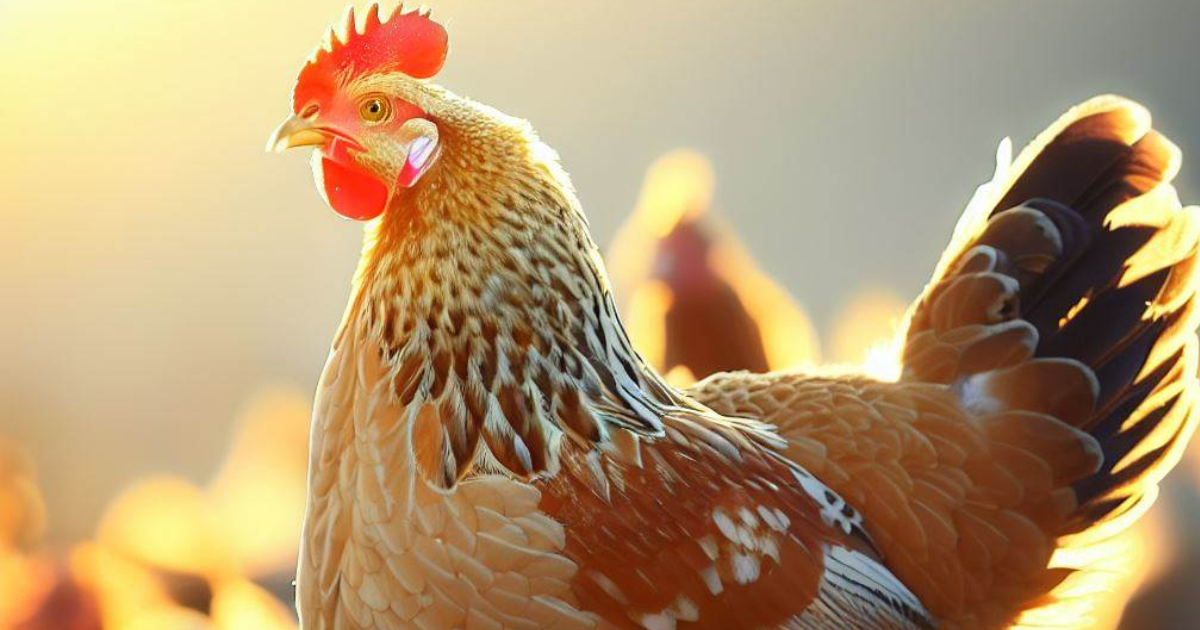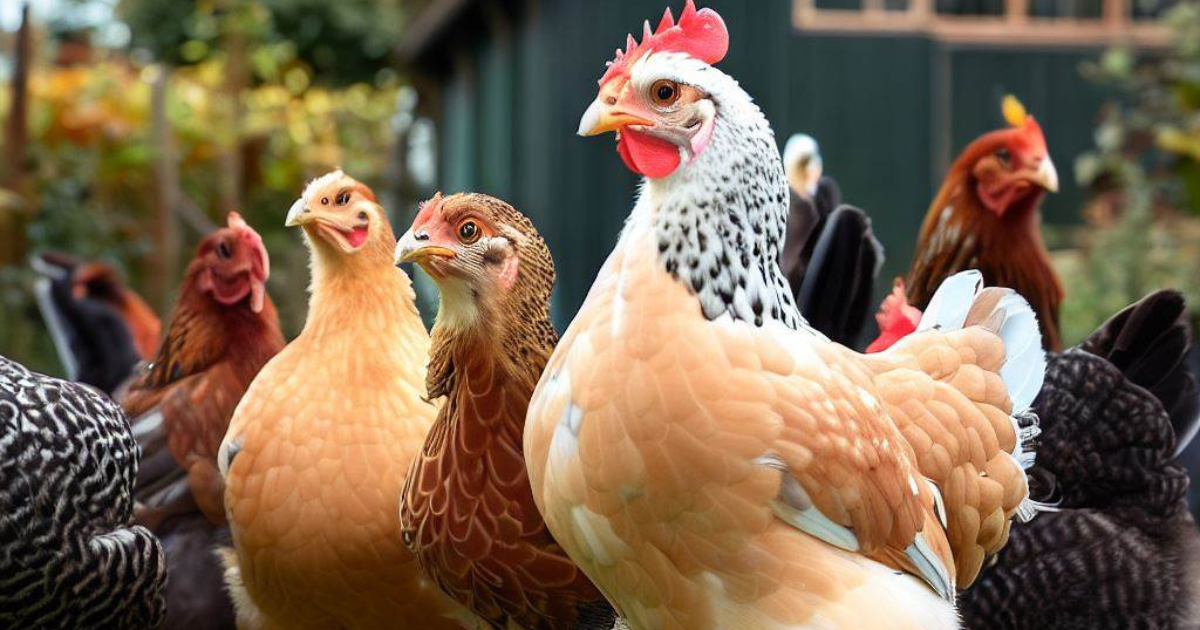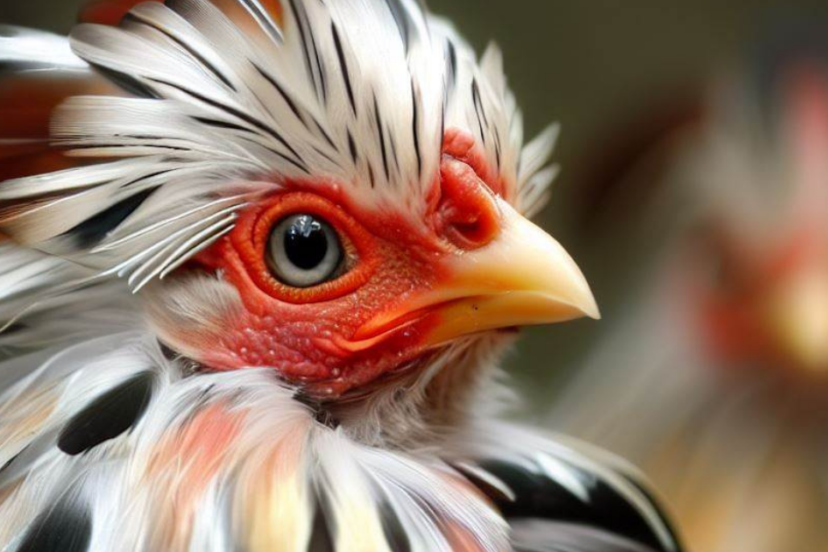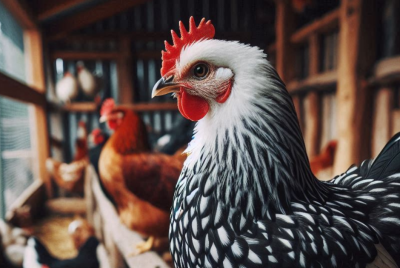Seabright Chickens (SeBright): A Compact and Captivating Breed
Some might pronounce the flock as SeaBright referring to their actual name SeBright. Every morning, I look forward to be pleasantly greeted by captivating and unique seabright chickens that stand out of the flock. With their compact size and stunning appearance, they have become a favorite among poultry enthusiasts. In this article, we will delve into the world of Seabright chickens, exploring their characteristics, benefits, care requirements, and more. I’m excited to share helpful suggestions and reasons for considering Seabright chickens in your flock. I will also share how I integrated Seabright and Amberlink chickens as part of the flock.
Unveiling Their Unique Journey

Seabright chickens are known for their distinct and eye-catching features. These small birds are compact in size, making them ideal for those with limited backyard space. Their feather patterns and colors are truly remarkable, ranging from lustrous silver to golden and black-laced patterns. Additionally, Seabright chickens showcase a variety of comb types, adding to their visual appeal.
When exploring the captivating heritage of SeaBright chickens, we unravel a tale that spans across centuries, continents, and the passion of dedicated breeders. Let’s delve into the remarkable history of these enchanting birds, tracing their origins and the efforts that have shaped them into the beloved breed we know today.
SeaBright chickens, also known as Nankin Bantams, have their roots deeply embedded in Southeast Asia. These small and ornamental chickens were cherished for their exquisite beauty and captivating demeanor. With time, their allure reached the shores of Europe, where they enchanted poultry enthusiasts with their stunning presence.
History
It was during the 19th century that SeaBright chickens began to gain prominence in England. Their story intertwines with that of the esteemed breeder Sir John Sebright, who played a pivotal role in refining and promoting these captivating chickens. The breed owes its name to the town of Sebright, where Sir John Sebright resided and dedicated himself to perfecting the breed.
Through careful selection and breeding, Sir John Sebright and subsequent breeders sought to enhance the breed’s unique characteristics. They focused on developing the striking feather patterns and vibrant colors that have become synonymous with SeaBright chickens. The breed gradually gained recognition and appreciation, both for its ornamental value and its delightful personality.
As the years passed, SeaBright chickens embarked on a journey beyond the borders of England, captivating poultry enthusiasts around the world. Their allure and distinctive traits made them a sought-after breed among hobbyists, exhibition breeders, and those seeking the perfect addition to their backyard flocks.
Today, SeaBright chickens continue to enchant with their miniature size, exquisite feathering, and gentle nature. Their history is a testament to the passion and dedication of breeders who have preserved and refined this extraordinary breed throughout the ages.
The history of SeaBright chickens is a story of beauty, dedication, and the transformative power of human endeavor. From their humble beginnings in Southeast Asia to their prominence in Europe and beyond, SeaBright chickens have captivated the hearts of poultry enthusiasts worldwide. Their journey, shaped by the vision and efforts of breeders, has resulted in a breed that epitomizes elegance, charm, and a touch of enchantment in the world of poultry.
Benefits of Raising Seabright Chickens
If you’re considering backyard chickens, Seabrights offer several advantages worth considering. Their compact size and moderate temperament make them suitable for smaller spaces and urban environments. These hardy birds require minimal maintenance and are known for their adaptability. Furthermore, if you have an interest in exhibition and shows, Seabright chickens can be a rewarding breed to showcase.
Housing and Feeding
Providing the right housing and nutrition is crucial for the well-being of Seabright chickens. Their small size means they don’t require as much space as larger breeds, but they still need a secure and well-ventilated coop. When it comes to feeding, a balanced diet consisting of high-quality poultry feed supplemented with fresh fruits, vegetables, and occasional treats will keep your Seabrights healthy and thriving.
Breeding and Genetics
Understanding the genetics of Seabright chickens can be fascinating for those interested in breeding. These birds possess unique genetic traits, and selective breeding can help achieve desired characteristics such as feather patterns and comb types. Engaging in responsible breeding practices can contribute to the preservation and improvement of the breed.
Health and Care
Like any living creature, these chickens may encounter health issues. Being proactive about their care is vital for their well-being. Familiarize yourself with common health problems that Seabrights may face, such as respiratory issues or mite infestations. Regular check-ups, proper hygiene practices, and a clean living environment will help keep your flock healthy and content.
Integrating Seabright Chickens into Your Flock

If you already have an existing flock, introducing Seabright chickens requires careful consideration. Slow and supervised introductions are key to ensure a smooth integration process. Monitoring their interactions and providing adequate space for each bird will help establish a harmonious and cohesive flock dynamic.
Integrating Seabright and Amberlink chickens: 8 Tips
Integrating Seabright and Amberlink chickens, can be done successfully with proper planning and gradual introductions. Here are some steps and tips to help facilitate the integration process:
Surrounding
1. Separate but Visible: Start by keeping the two chicken breeds separated but within sight of each other. This allows them to become familiar with each other’s presence without direct contact. Use a wire fence or mesh to create a barrier between them.
2. Free-Range Time: When the chickens are comfortable seeing each other, you can introduce them during supervised free-range time. This allows for controlled interactions and minimizes the risk of aggressive behavior. Make sure to closely monitor their behavior and intervene if any aggression occurs.
3. Neutral Territory: Introduce the chickens to a new area that is unfamiliar to both breeds. This can help reduce territorial instincts and minimize conflicts. Ensure there is enough space for all the chickens to move around comfortably.
4. Gradual Integration: Begin by allowing short periods of supervised interaction between the two breeds. Gradually increase the duration over time as you observe positive interactions and minimal aggression. Watch for signs of bullying or aggressive behavior and be prepared to separate any individuals if needed.
Food and Behaviour
5. Multiple Food and Water Stations: Ensure that there are multiple feeding and watering stations spaced apart to prevent competition and reduce the likelihood of aggression. This allows each chicken to have access to resources without feeling threatened.
6. Observe Pecking Order Establishment: Chickens establish a pecking order within their flock, and introducing new members can disrupt this order. It’s normal to see some initial squabbles as they establish their positions. However, if the aggression becomes excessive or poses a safety risk, separate the aggressive individuals temporarily and try reintroducing them later.
7. Provide Hiding Places: Create hiding spots or separate areas within the coop or yard where individual chickens can retreat if they feel stressed or overwhelmed. This can help alleviate tension and provide a sense of security for each bird.
8. Patience and Monitoring: Integration can take time, and it’s important to be patient throughout the process. Regularly observe the chickens’ interactions and monitor their overall well-being. If any severe aggression persists, it may be necessary to permanently separate certain individuals to maintain a harmonious flock.
Remember, every chicken is unique, and the integration process can vary. It’s crucial to adapt your approach based on the individual personalities and behaviors of the chickens involved. Providing ample space, resources, and a stress-free environment will increase the chances of a successful integration between Sebright and Amberlink chickens.
Tips for Successful Seabright Chicken Ownership
To ensure a successful and enjoyable experience with these chickens, here are a few essential tips to keep in mind. First, provide suitable environmental conditions, including proper shelter, ventilation, and protection from predators. Secondly, observe their behavioral tendencies, as Seabrights are known to be active and curious. Engage them with environmental enrichment, such as perches and toys, to keep them mentally stimulated.
Conclusion
Seabright chickens offer a unique blend of beauty, charm, and practicality for backyard chicken enthusiasts. Their compact size, striking feather patterns, and hardiness make them an attractive choice for both urban and rural settings. By providing proper care, suitable housing, and a balanced diet, you can enjoy the pleasure of raising and admiring these captivating birds. Whether you’re a seasoned poultry keeper or a beginner, they are sure to bring joy and fascination to your flock.
FAQs
1. Can Seabright chickens fly?
Seabright chickens possess the ability to fly short distances, but their flight capabilities are generally limited due to their smaller size and body structure.
2. How do Seabright chickens handle cold weather?
With their dense plumage, Seabrights are well-equipped to tolerate cold weather. However, providing adequate shelter and insulating the coop during colder months is still essential to ensure their comfort and well-being.
3. Are Seabright chickens good egg layers?
Seabright chickens are not known for their egg-laying capabilities. While they may lay a moderate number of eggs, their primary appeal lies in their ornamental value rather than egg production.
4. What is the average lifespan of a Seabright chicken?
With proper care and nutrition, they can live up to 6 to 8 years, allowing you to enjoy their company for an extended period.
5. Where can I find reputable Seabright chicken breeders?
Reputable breeders can be found through local poultry clubs, online forums, or dedicated poultry breeder directories. It’s essential to research and choose breeders who prioritize the health and well-being of their chickens.
*We may earn a commission from purchases made through our links, at no cost to you. This does not affect our product recommendations. Please see our disclosure to learn more.




